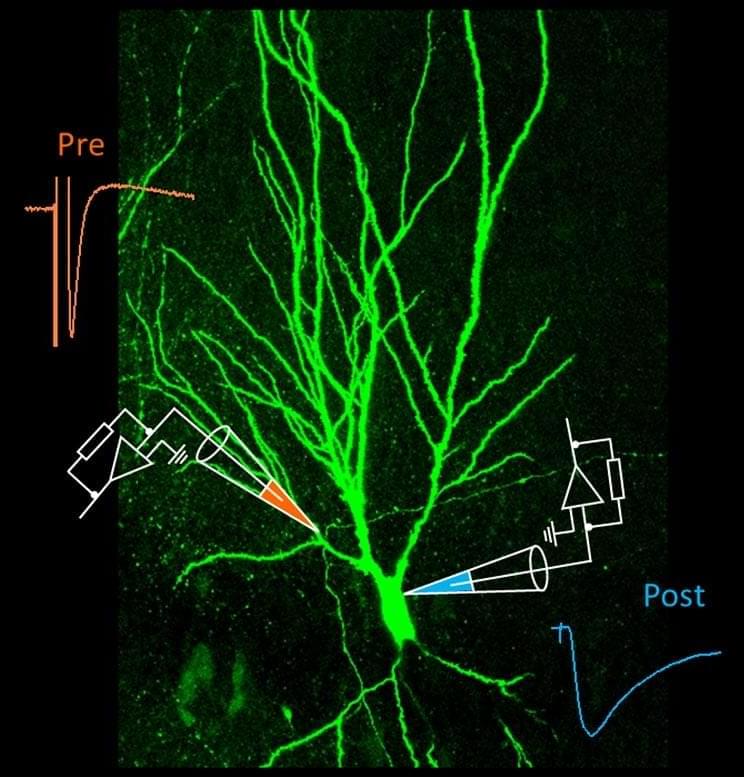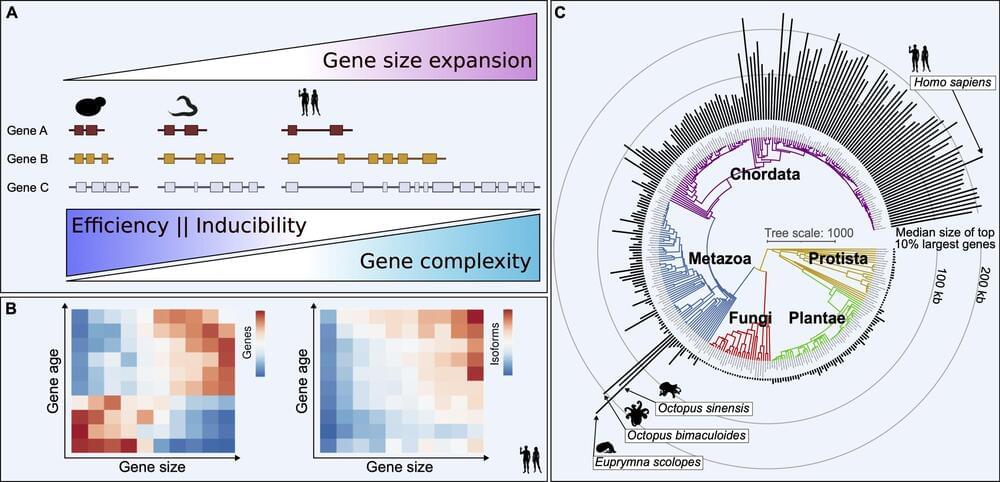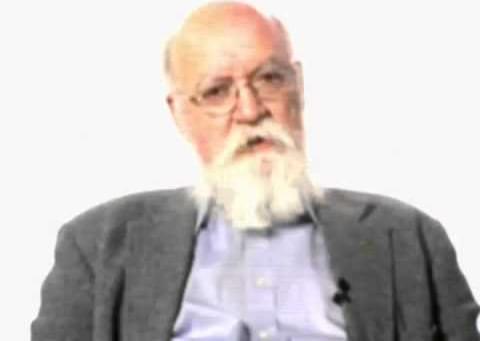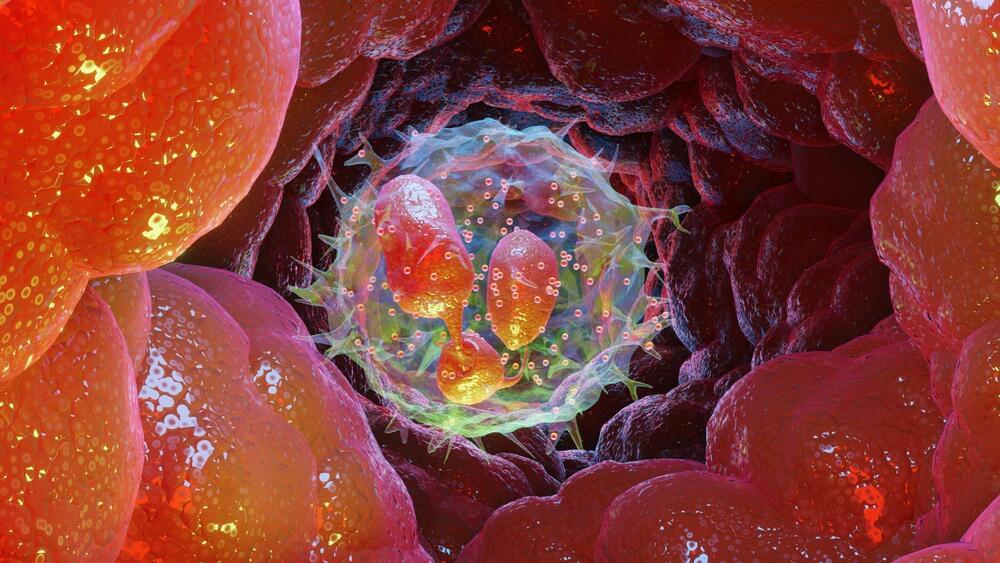Archive for the ‘neuroscience’ category: Page 116
Mar 30, 2024
What is quantum cognition, and how is it applied to psychology?
Posted by Dan Breeden in categories: computing, mathematics, neuroscience, quantum physics
Quantum cognition is a new research program that uses mathematical principles from quantum theory as a framework to explain human cognition, including judgment and decision making, concepts, reasoning, memory, and perception. This research is not concerned with whether the brain is a quantum computer. Instead, it uses quantum theory as a fresh conceptual framework and a coherent set of formal tools for explaining puzzling empirical findings in psychology. In this introduction, we focus on two quantum principles as examples to show why quantum cognition is an appealing new theoretical direction for psychology: complementarity, which suggests that some psychological measures have to be made sequentially and that the context generated by the first measure can influence responses to the next one, producing measurement order effects, and superposition, which suggests that some psychological states cannot be defined with respect to definite values but, instead, that all possible values within the superposition have some potential for being expressed. We present evidence showing how these two principles work together to provide a coherent explanation for many divergent and puzzling phenomena in psychology. (PsycInfo Database Record © 2020 APA, all rights reserved)
Mar 30, 2024
Quantum Cognition: Does it explain irrational decisions?
Posted by Dan Breeden in categories: neuroscience, quantum physics

Humans can sometimes be hard to understand, much like quantum physics — unless you watch this channel regularly of course. That’s why a mathematician has come out with an idea of “quantum cognition”. What is this so-called quantum cognition? Does it explain why humans make irrational decisions? Let’s have a look.
📝 Transcripts and written news on Substack ➜ https://sciencewtg.substack.com/
Continue reading “Quantum Cognition: Does it explain irrational decisions?” »
Mar 30, 2024
Biomolecular Bonsai: Controlling the Pruning and Strengthening of Neuron Branches in the Brain
Posted by Dan Breeden in categories: biotech/medical, neuroscience
Researchers identify molecular cues that make developing neurons remodel their connections.
At this very moment, the billions of neurons in your brain are using their trillions of connections to enable you to read and comprehend this sentence.
Now, by studying the neurons involved in the sense of smell, researchers from Kyushu University’s Faculty of Medical Sciences report a new mechanism behind the biomolecular bonsai that selectively strengthens these connections.
Mar 30, 2024
Synaptic Transmission: Not a One-Way Street for Key Brain Synapse in the Hippocampus
Posted by Dan Breeden in categories: chemistry, neuroscience
Key synapse acts as a “smart teacher,” sending messages against the usual flow of information in the brain.
Information flows in a well-defined direction in the brain: Chemical and electrical signals are passed from one neuron to the other across the synapse, from the pre-synaptic to the post-synaptic neuron. Now, Peter Jonas and his group at the Institute of Science and Technology Austria (IST Austria) show that information also travels in the opposite direction at a key synapse in the hippocampus, the brain region responsible for learning and memory.
At the so-called mossy fiber synapse, the post-synaptic CA3 neuron influences how the pre-synaptic neuron, the so-called mossy fiber neuron, fires. “We have shown, for the first time, that a retrograde information flow is physiologically relevant for pre-synaptic plasticity,” says Yuji Okamoto, a postdoc in the group of Peter Jonas at IST Austria and co-first author of the paper published in Nature Communications.
Mar 29, 2024
Chickadees have unique neural ‘barcodes’ for memories of stashing away food
Posted by Dan Breeden in categories: food, neuroscience

Black-capped chickadees have extraordinary memories that can recall the locations of thousands of morsels of food to help them survive the winter. Now scientists at Columbia’s Zuckerman Institute have discovered how the chickadees can remember so many details: they memorize each food location using brain cell activity akin to a barcode. These new findings may shed light on how the brain creates memories for the events that make up our lives.
Mar 29, 2024
How did nervous systems, with their incredible complexity, evolve across different species?
Posted by Dan Breeden in category: neuroscience
New research supported by the Wu Tsai Neurosciences Institute’s Interdisciplinary Postdoctoral Scholars program zeroes in on the surprising observation that many genes found in brain cells and synapses—the points of communication between neurons—are among the largest in the animal kingdom.
Mar 29, 2024
Daniel Dennett Explains Consciousness and Free Will | Big Think
Posted by Dan Breeden in category: neuroscience

The ability to link mind and machine has long been the realm of science fiction, but now improvements in our understanding may allow us to network brain to computer in the near future. Companies like Neurolink have begun to explore how to link our neurons to machine, and we’ll explore now such neural interfaces might function and how they might change our lives.
Visit our sponsor, Brilliant: https://brilliant.org/IsaacArthur/
Neurolink Paper, \
Mar 29, 2024
Neuropeptide Lacking in Diabetics Promotes Wound Healing
Posted by Shubham Ghosh Roy in categories: biotech/medical, life extension, neuroscience
“In adults with diabetes alone—where poor blood flow can lead to quickly worsening wounds that are often very slow or impossible to heal—the lifetime risk of developing a diabetic foot ulcer (DFU), the most common diabetes-related wound, is 20–35 percent and this number is rising with increased longevity and medical complexity of people with diabetes,” stated lead author, Yen-Zhen Lu, PhD, an investigator at ARMI.
Nociceptors— neurons that sense pain, tissue damage, and inflammation, among other functions— respond to wounds by producing a neuropeptide called calcitonin gene-related peptide (CGRP). “Nociceptor endings grow into injured skin and muscle tissues and signal to immune cells through the neuropeptide CGRP during the healing process,” the authors wrote. Immune cell response in neutrophils, monocytes, and macrophages are modified to encourage active repair in the region.
Individuals with diseases like diabetes or elderly people have reduced production of CGRP, leading to poor, inefficient, or incomplete wound healing. The new study explores the impact of CGRP alone by introducing it into diabetic mice as well as mice without nociceptors. “Delivery of an engineered version of CGRP accelerated wound healing and promoted muscle regeneration,” the authors wrote. “Remarkably, this neuropeptide acts on immune cells to control them, facilitating tissue healing after injury,” added co-author Mikaël Martino, PhD, associate professor, ARMI.















